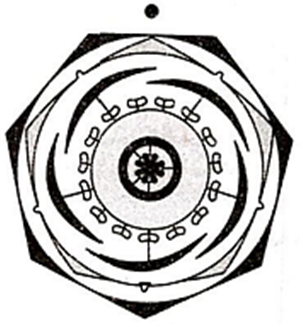 Multiple Choice Questions
Multiple Choice QuestionsChoose the correct option depicting the floral formula of the diagram given below

BrP3 + 3 A3 + 3 (3)
BrEpi5 - 7 K(5) C5 A() (5)
Ebr K2 + 2 C4 A2 + 4 (2)
% K5 C5 A7 + 3 (1)
Which of the following groups of plants are propagated through underground root?
Pistia, Chrysanthemum and pineapple
Ginger, potato, onion and zamikand
Sweet potato, Asparagus, Tapioca and dahlia
Bryophyllum and Kalanchoe
C.
Sweet potato, Asparagus, Tapioca and dahlia
Reproductive roots are adventitious roots, which are generally fleshy and develop adventitious buds. They serve as a means of vegetative propogation. For e.g., sweet potato, Asparagus, Tapioca and dahlia.
Artificial induction ofroots on stems before it is separated from the parent plant for propagation is called
layering
root-stem joint
cutting
plant tissue culture
Consider the following four statements I, II, III and IV and select the right option.
I. The floral formula for Liliaceae is
P3 + 3 A3 + 3 +
II. In vexillary aestivation, the large posterior petal is called, standard, two lateral ones are wings and two small anterior petals are termed keel.
III. In pea flower the stamens are monoadelphous.
IV. The floral formula for Solanaceae is
K(3) C(3) A(14) +
The correct statements are
II and III
I and III
I and II
III and IV
Growth of stem in diameter is due to
apical cell
lateral meristem
apical meristem
intercalary meristem
Corm is an
underground vertical leaf
underground swollen stem
underground horizontal root
underground horizontal leaf
The petiole modified into flattened lamina like structure is present in
Acacia nilotica
Acacia arabica
Acacia australasia
Acacia auriculoformis
